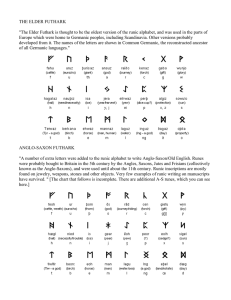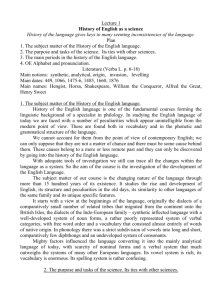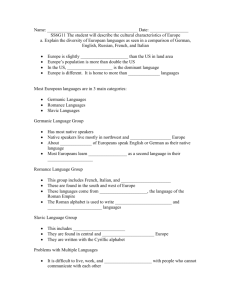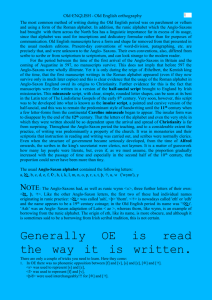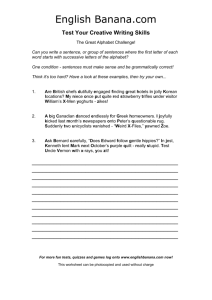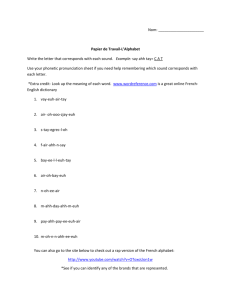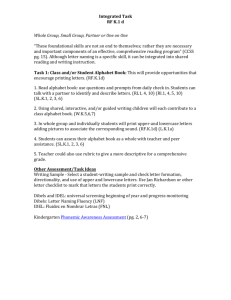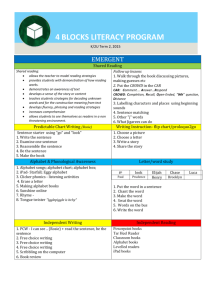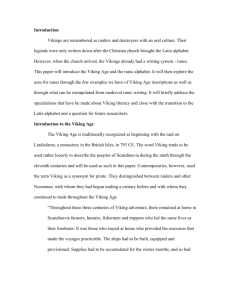Runic alphabet
advertisement
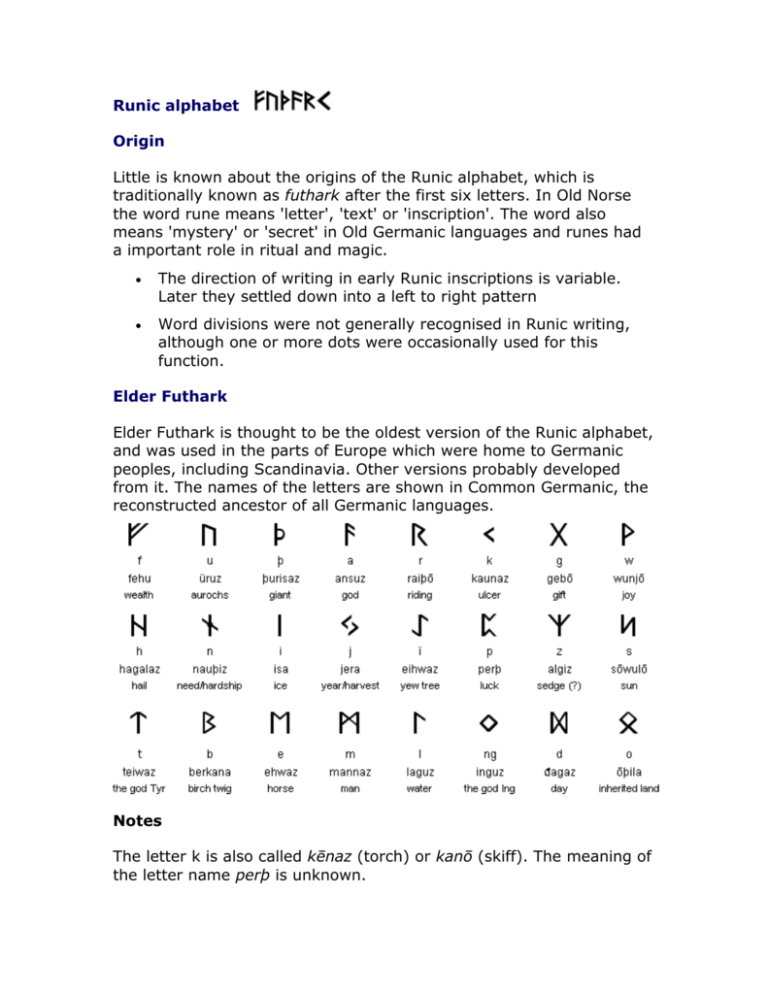
Runic alphabet Origin Little is known about the origins of the Runic alphabet, which is traditionally known as futhark after the first six letters. In Old Norse the word rune means 'letter', 'text' or 'inscription'. The word also means 'mystery' or 'secret' in Old Germanic languages and runes had a important role in ritual and magic. The direction of writing in early Runic inscriptions is variable. Later they settled down into a left to right pattern Word divisions were not generally recognised in Runic writing, although one or more dots were occasionally used for this function. Elder Futhark Elder Futhark is thought to be the oldest version of the Runic alphabet, and was used in the parts of Europe which were home to Germanic peoples, including Scandinavia. Other versions probably developed from it. The names of the letters are shown in Common Germanic, the reconstructed ancestor of all Germanic languages. Notes The letter k is also called kēnaz (torch) or kanō (skiff). The meaning of the letter name perþ is unknown. Younger Futhork Younger Futhork or "Normal Runes" gradually evolved Elder Futhark over a period of many years and stabilized by about 800 A.D., the beginning of the Viking Age. It was the main alphabet in Norway, Sweden and Denmark throughout the Viking Age, but was largely though not completely replaced by the Latin alphabet by about 1200 as a result of the conversion of most of Scandinavia to Christianity. Three slightly different versions of the alphabet developed in Denmark, Sweden and Norway: Danish Futhark Swedish-Norwegian / Short-twig / Rök Runes Norwegian Futhark
